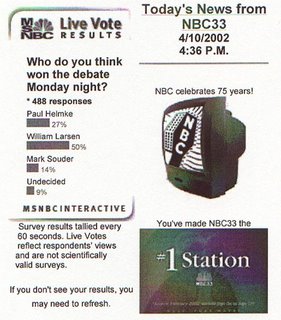Expand Carroll H.S. or Build a New H.S.?
How many in Northwest Allen County School’s know the proposal for Carroll’s expansion may actually cost far more than building a new high school? I learned at the Candidate’s forum for School board that the proposed expansion would increase capacity to 2800 students. I was told current enrollment in the main campus was 1,500 and about 600 at the freshmen campus for 2,100 overall. The new expansion would increase capacity by 700. A new school was estimated at $100 Million.
To decide which is the best route is done by looking at cost per student. A $100 million new H.S. with a capacity of 1,500 students costs $66,667 per seat. An expansion costing $60 million and adding 700 students costs $85,714 per seat.
Expanding Carroll will create a dilemma in the future similar to what New Haven High School experienced where the old building was built in 1909, the second portion built in the 1950's and a newer wing in the 60's. You had three separate areas of different ages combined. When looking at useful life of a building you want the entire thing to fail at the same time. Otherwise you have un-recouped capital infrastructure commingled with un-usable infrastructure. With Carroll, a large portion of the cost is to build a new gym where all students can be assembled. It has been expanded in the past where new gyms were built to accommodate increased capacity. Another expansion will add a new larger gym. The problem is the useful life of the older gyms have not expired and we are paying on those bonds now. In essence we will now have three bonds we will be paying on where two of the gyms will not be used to accommodate all students at one time. The original justification is no longer valid after a new gym is built, but payment is still required.
Without too much information to go on, it looks like the expansion is a stopgap measure at best. Because they use cash flow accounting, it looks cheaper now. However, under accrual accounting it is a very expensive route. With cash flow accounting, the cost of paying for the building decreases yearly. This makes it appear to cost far more up front. Under accrual accounting, you amortize the true cost over the life of the building, escalating the cost to taxpayers yearly based on inflation. This reduces the cost up front on the original tax base and uses the increasing tax base on a yearly basis to level the tax rate (no increase). In this way the tax rate remains constant and the only increase in property tax is the result of increased property values. If you do not do this, the tax rate will rise again and again and again even after increased property values are taken into account.



0 Comments:
Post a Comment
<< Home